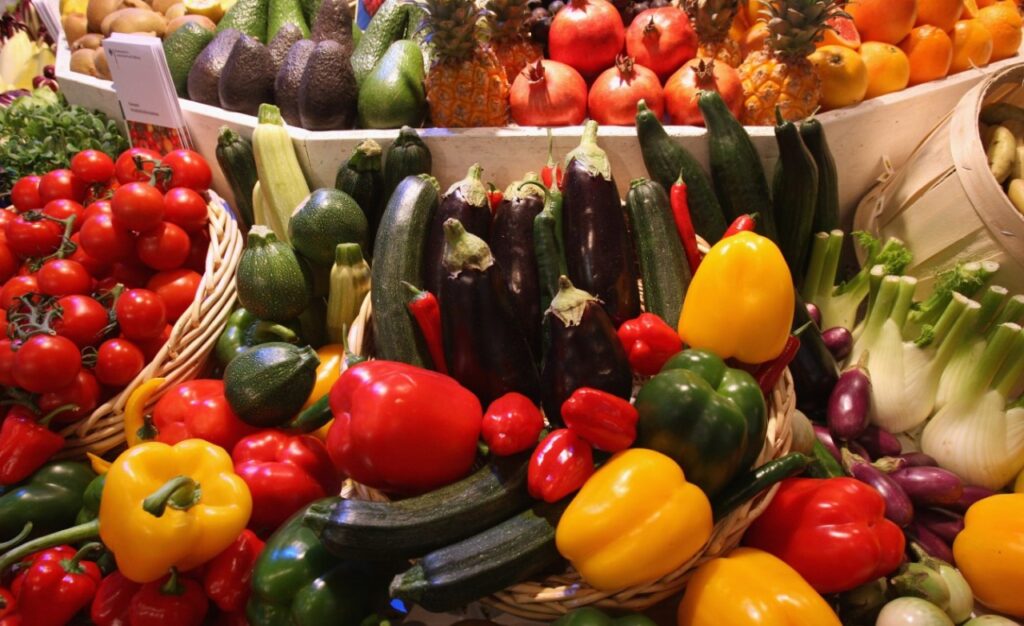Income-based health disparities in the United States are among the worst in the world, and malnutrition is at the heart of the problem.
Unhealthy diets now cause more deaths in the United States than tobacco or other health risk factors. Blacks, Latinos, indigenous peoples, and people with low incomes have much higher rates of diet-related illnesses than white Americans and people with higher incomes. Lack of fruit and vegetable intake is a major cause of poor eating habits, yet most Americans do not eat enough fruits and vegetables. This issue disproportionately impacts these communities, primarily due to cost and access barriers.
To address these inequities, Congress should expand a little-known but highly effective federal program called the USDA Gus-Schumacher Nutrition Incentive Program (GusNIP). It allows people in the Supplemental Nutrition Assistance Program (SNAP) to buy fruits and vegetables and get the most out of their nutrition. It benefits communities of color and low-income people.
The consequences of inappropriate consumption of agricultural products are serious. Eating fruits and vegetables reduces your risk of chronic diseases such as cardiovascular disease, type 2 diabetes, and cancer. Suboptimal intake of fruits and vegetables causes 139,000 deaths in the United States each year from cardiovascular disease alone. People in underserved communities are more likely to die due to cost and access barriers. Intake is lower than in advantaged groups. A GusNIP participant said: [my community]They know how to cook from scratch, but what they're missing is the availability of a variety of fruits and vegetables. ”
Removing barriers to accessing nutritious foods, especially fruits and vegetables, is essential to reducing health inequalities. GusNIP is an initiative designed specifically to address deep inequalities in the availability and affordability of fruit and vegetables.
GusNIP provides cash incentives in the form of electronic loyalty cards, coupons, or tokens to help SNAP participants purchase more fruits and vegetables. The program also supports American farmers by prioritizing direct-to-consumer sales and locally grown produce.
GusNIP works. Rigorous evaluations showed a significant increase in fruit and vegetable purchases and consumption among program participants, who went on to consume more fruits and vegetables than the average American. This program has emerged as a vital tool to reduce the fruit and vegetable affordability gap.
GusNIP is funded through the Farm Bill. As Farm Bill negotiations continue, there is an opportunity to maximize the program's impact on nutrition disparities and reach its full potential in reducing health disparities.
Although GusNIP is an important and effective program, the way it is implemented limits its ability to fully address inequalities and reach communities with the greatest need. To address these limitations, we convened a group of nutrition incentives experts from across the country to develop recommendations to improve the equity of GusNIP. The iterative recommendation development process included feedback from key stakeholders and his GusNIP participants.
First and foremost, the expert group called for increased funding for the program, as the main obstacle limiting GusNIP's impact on inequality is that current funding levels are woefully inadequate. Currently, his SNAP enrollment in this program is less than 1%.
If all 22 million households participating in SNAP received the $20 monthly incentive, the annual cost of GusNIP would be $5.3 billion. Although such a large increase is unlikely given the current state of the Farm Bill, significant funding increases are needed to support additional equity enhancement program changes as well as expand enrollment. is essential. One GusNIP participant stated, “There are many families who need this type of support…I wish more people could qualify for this program.”
Second, organizations serving underserved communities face many challenges in securing GusNIP funding. For example, the program requires grant recipients to match federal funds dollar for dollar with local resources. This creates financial barriers to winning awards, especially for organizations with fewer resources. Eliminating the matching funding requirement would allow a more diverse range of organizations to participate in the program, making it more inclusive and bringing the benefits of fruit and vegetable incentives to a more diverse range of SNAP participants.
The group's recommendations also include providing smaller grants and technical assistance to small, community-based organizations. Supporting the expansion of the GusNIP project across the state to reach more communities. Trial and evaluate SNAP incentive and electronic benefits card integration to maximize GusNIP benefit redemptions. Efforts to increase awareness of the program among SNAP participants. Additional training and support to increase the participation of small food retailers owned by community members and frequented by community members.
We envision a GusNIP program that promotes equity. We urge policymakers to further increase program success by expanding coverage and making it easier for underserved communities to participate. These changes will help GusNIP benefit those who need it most and move us closer to a nation where everyone, regardless of income, race or ethnicity, has access to healthy food and enjoys good health. can.

The 2024 Farm Bill provides a significant opportunity to strengthen GusNIP and propel us toward a future where health equity is not just an aspiration, but a tangible reality for everyone.
Jim Krieger, MD, MPH is executive director of Healthy Food America and clinical professor of medicine and health systems and population health at the University of Washington.
Dr. Sarah John is Deputy Director of the Center for Science in the Public Interest. She served as evaluation director for her SNAP incentive program across New England and worked for the Partnership for a Healthier America.
Copyright 2024 Nexstar Media Inc. All rights reserved. This material may not be published, broadcast, rewritten, or redistributed.


